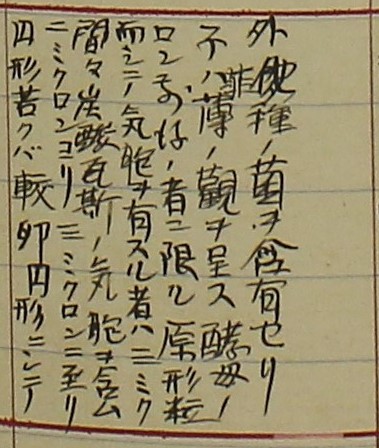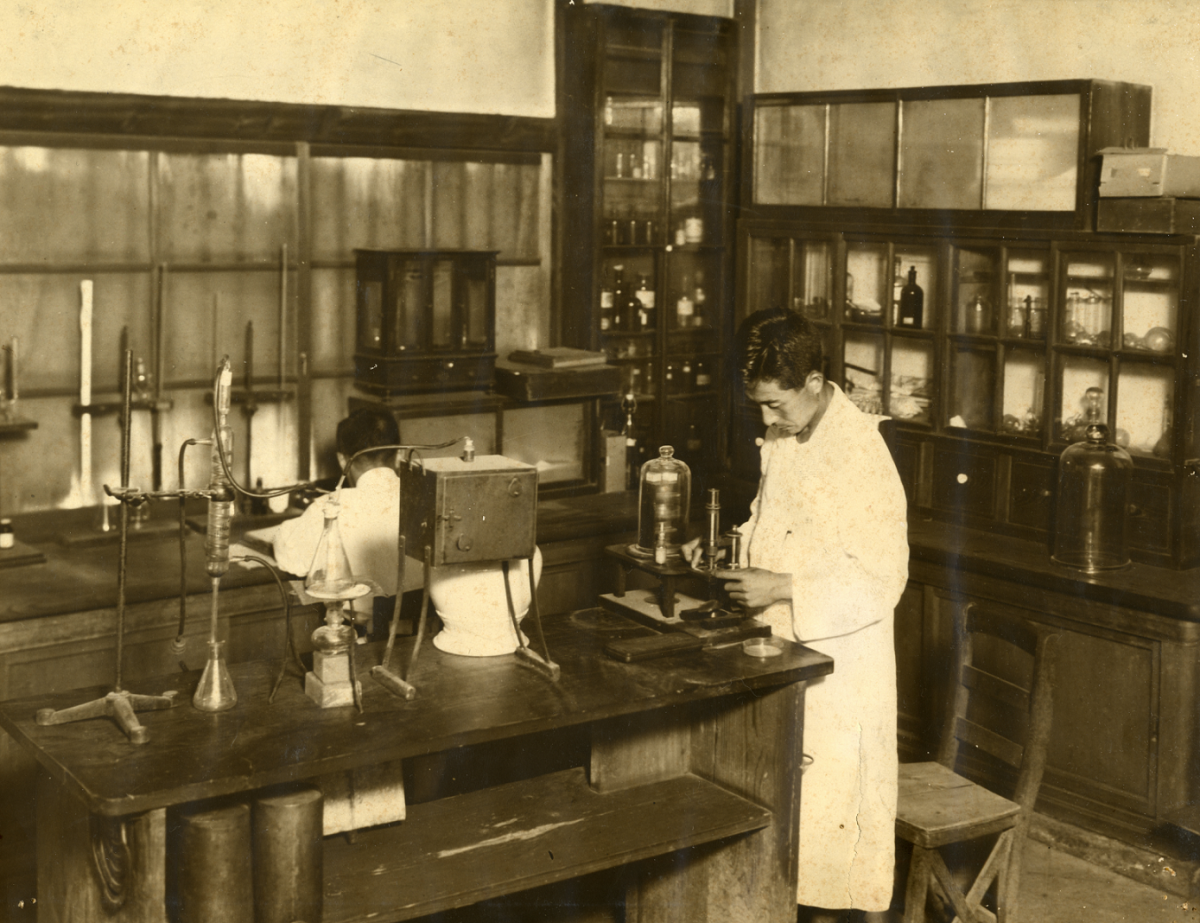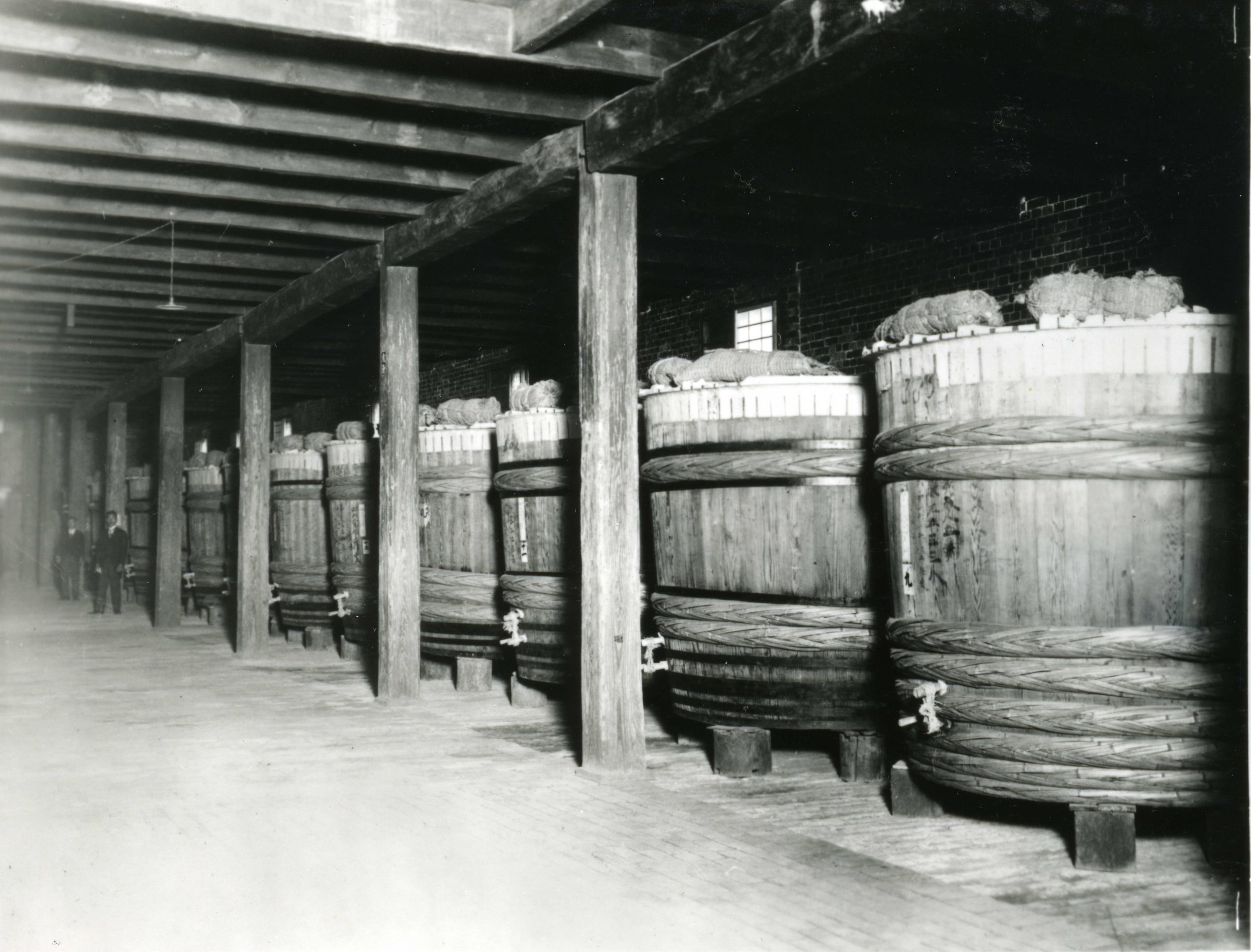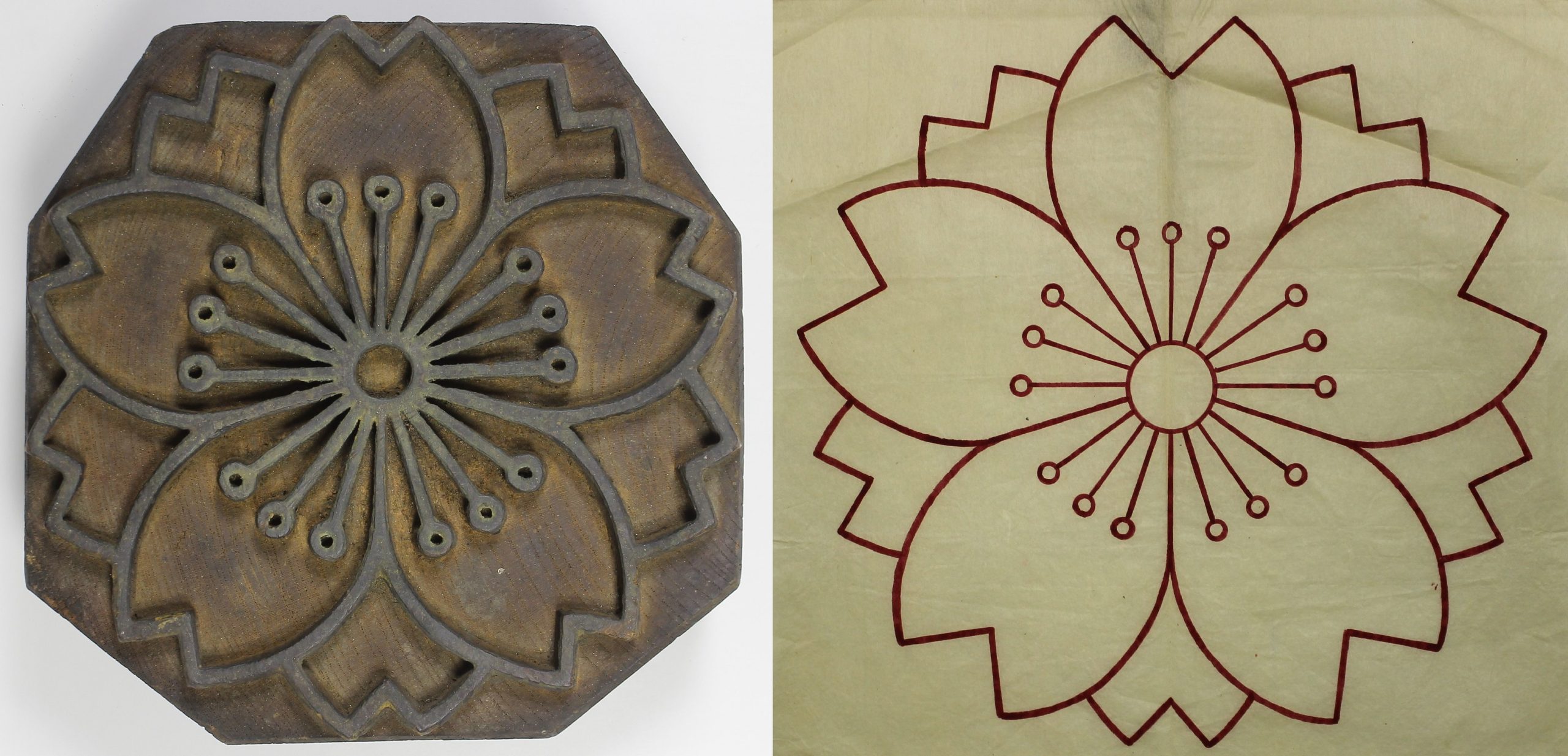Today is October 1st and it is ‘International Sake Day’! The brewing season of sake has begun, too! Our exhibition ‘The Microscopic World of Sake’ in the Sake Reference Room is still available to visit at the museum until November 23rd. Coinciding with the exhibition, we have posted a three-part series titled ‘Sake Brewing and Microorganisms’. In this final article of the series, we will focus on yeast, another crucial microorganism in sake brewing.
In the last article, we explained that koji mold (another crucial microorganism in sake brewing) is visible because of the whitish color it would leave on foods such as rice when it multiplied. On the contrary, yeast is not visible – its size is only 5㎛ (5 micrometer=0.005㎜). To give a frame of reference, the diameter of a human hair is 80㎛, and the size of yeast is about 1/16 of a human hair. When refined sake began to be made during the Edo period, people had no idea what yeast was, nor the existence of it.

During the Meiji era (1868-1912), various knowledge and technology were imported by Western people who visited Japan. Among them were some of the scientists who launched the study of Japanese sake. In 1896, Japanese research scientists were hired by the Ministry of Finance, and this began the study of yeast for sake brewing by the Japanese. Subsequently many sake breweries in Japan began the scientific study of yeast. Historical documents in the Meiji era include records such as the examination of yeast under a microscope, and the comparison of fermentation ability of various types of yeast.

Now, let’s see what role yeast plays during sake fermentation. In the last article, we explained that koji mold converts the starch in rice into glucose (sugar). Yeast is the microorganism responsible for converting the glucose (sugar) into alcohol and carbon dioxide.

There are various types of sake yeasts, and each has a unique characteristic. The type of yeast that is particularly beneficial for sake brewing is registered as ‘Kyokai yeast’ and is sold to sake breweries by the Brewing Society of Japan. Many other unique sake yeasts are also studied and developed in many regions and sake breweries, because yeast is crucial to bringing out the flavor and aroma of sake. To be more specific, the numerical values found on sake labels, such as alcohol content, sake meter and acidity, are directly the result of the work of yeast.
We hope you have come to understand the utmost importance of invisible microorganisms in sake brewing through the articles in this three-part series. We will continue introducing more interesting information about sake in future articles, so please keep checking our website!







I’ll introduce some of the important sake brewing tools exhibited at the museum!